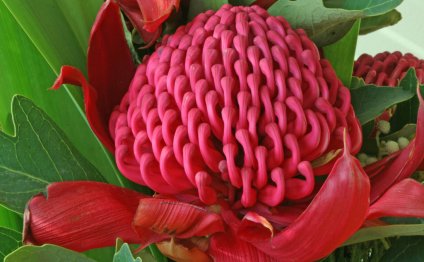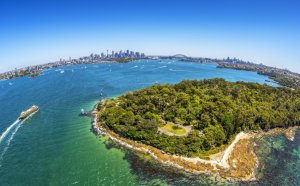
New South Wales floral emblem
 (plant family: Mimosaceae)
(plant family: Mimosaceae)
Floral Emblem of Australian Continent
Background
Joseph Finance companies (1743-1820), English naturalist and patron of technology on Captain James Cook's Endeavour voyage, 1768-70, recognized in flora of brand new Southern Wales an apparent lack of plant foods appropriate to European style. In 1786 Captain Arthur Phillip ended up being appointed Governor of the latest Southern Wales, and Banking institutions informed him of the need to take seeds and flowers to produce whole grain, fruit and veggies for the penal colony. To supply meals Phillip took grain and corn from England. He labeled as at Rio de Janiero and obtained:
- Coffee, both seed and plant;
Cocoa inside nut;
Cotton seed;
Banana-plant;
Oranges, different kinds both seed and plant;
Tamarind;
Prickly pear, plant with cochineal upon it; ...
Ipecacuanha - three types;
Jalap.
During the Cape of Good Hope he acquired quince, apple, pear, strawberry, fig, bamboo, sugar, pine and myrtle flowers. Oak and myrtle, the initial decorative flowers introduced into the new colony, level the start of a veritable flooding of unique types as settlers sought to assuage their particular homesickness with the familiar plants of English horticulture.
Bank's recognition of this rich and unfamiliar nature of this Australian flora stimulated vibrant curiosity in European botanists and plant collectors, and various dried specimens, seeds and plants were sent from colony to herbaria and horticultural lovers in Europe. Notable botanists, primarily British, German and French, visited Australia to get specimens of flowers mostly a new comer to science.
For most regarding the nineteenth century few settlers in Australian Continent displayed any curiosity about the local flora, either intrinsically or horticulturally, preferring home gardens of unique plants. Bigger landholders exploited the unusual ramifications of local plants like Norfolk Island Pine and Bunya Pine, but inevitably they were created in grand gardens of predominantly unique species.
Patriotism
Within the character of national and patriotic fervour produced by the strategy of Federation, attained in 1901, public interest in the Australian environment was awakened together with find a national identity brought the desire for national signs.
Archibald Campbell founded a Wattle Club in Victoria in 1899 to market a Wattle Day demonstration every September to encourage recognition associated with the flower as emblematic of patriotism. In 1908 he delivered a lecture entitled 'Wattle Time; or Yellow-haired September' which he stated that 'by figures, the Wattle is nearly exclusively Australian, and really should unquestionably be our National Flower'. Interest in a national Wattle Day was revived in Sydney in 1909. Victoria and Southern Australia participated in 1910, and Queensland in 1912.
Simultaneously R. T. Baker, botanist and museum curator, advocated the option of the Waratah, Telopea speciosissima once the Australian nationwide rose. He penned:
- "The appearance 'the land regarding the Waratah', applies to Australian Continent and no various other; it's Australia's own. Within the Wattle, Australia have not a monopoly like Waratah, for Africa has over one hundred local wattles, and in addition it happens in the usa, East and western Indies additionally the Islands. However it's not a great deal to say that throughout the entire botanical world the Waratah might be unsurpassed as a flower for ornamental reasons, and it's also impractical to so conventionalise it of recognition a great feature in a national flower."
In 1911 the Evening News in Southern Australian Continent reported indignant regional response to a report 'that South Africa has commandeered the yellowish rose (wattle), and proposes to make use of it for patriotic purposes' and supported the option associated with Waratah once the Australian nationwide rose, noting its tangible features of energy, beauty and colour and its symbolic characteristics of health, tone, endurance and independence.
The use of wattle because the national flower tends to be confirmed by its introduction to the design associated with the Australian armorial bearings from the recommendation associated with Rt Hon. Andrew Fisher, Prime Minister of Australian Continent, as soon as the Commonwealth Armorial Ensigns and Supporters had been granted by Royal Warrant on 19 September 1912.
The conflict which existed in regards to the range of the Australian national rose is observed in the inclusion of both waratah and wattle plants as design on the three fantastic trowels used by the governor-general, Lord Denman, the Prime Minister, the Rt Hon. Andrew Fisher therefore the Minister for Residence matters, the Hon. King O'Malley, for the laying of basis rocks of this commencement line in Canberra, the national money, on 12 March 1913.
Proclamation
Acacia pycnantha liked popular acceptance as Australia's nationwide rose for most of this century but it was not proclaimed due to the fact nationwide flowery emblem until 1988, the entire year of Australia's bicentenary. The Gazettal is dated 1 September 1988, signed by the governor-general, Sir Ninian Stephen, on 19 August 1988.
a ceremony was held on 1 September 1988 during the Australian National Botanic Gardens when the Minister for Residence Affairs, Robert Ray, made the formal statement, and Prime Minister's partner, Mrs Hazel Hawke, planted a Golden Wattle.
Four many years later on, in 1992, the 1 September ended up being formally announced 'National Wattle Day' by the Minister the Environment, Mrs Ros Kelly at another service in the Australian nationwide Botanic Gardens. The Gazettal is dated 24 August 1992 and ended up being signed by the Governor General, Bill Haydon, on 23 Summer 1992.
Acacia pycnantha
The specimen from where it was named was collected in 1836 into the interior of brand new Southern Wales because of the Surveyor-General of New South Wales, Thomas Mitchell, just who led two exploratory expeditions towards the Darling and Murray River systems. The Brit botanist, George Bentham (1800-1884) described the types in 1842. Bentham composed Flora Australiensis, the standard guide text on Australian plants before the book for the Flora of Australia, which commenced in 1981.
Share this Post
Related posts
Nambucca Heads, New South Wales
Thank you for visiting Eyecare Plus Optometrist Nambucca Heads Local optometrist Eyecare Plus Nambucca Heads target comprehensive…
Read MoreSydney New South Wales Australia weather
A slow-moving storm has actually hammered components of eastern Australia s New South Wales province with damaging winds…
Read More










